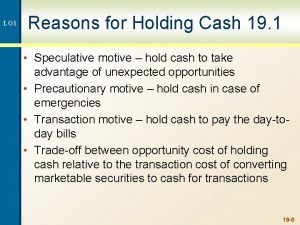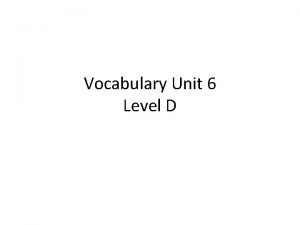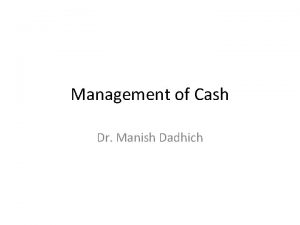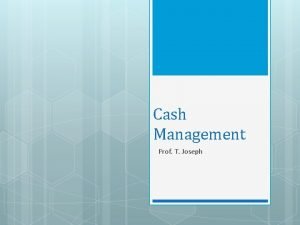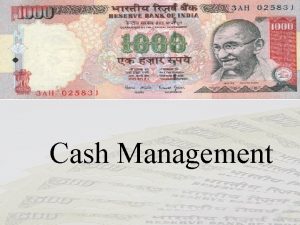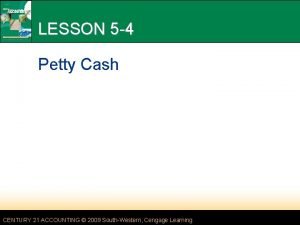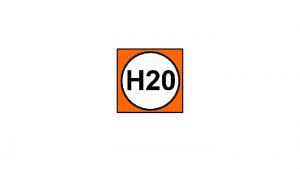LO 1 Reasons for Holding Cash 19 1






- Slides: 6

LO 1 Reasons for Holding Cash 19. 1 • Speculative motive – hold cash to take advantage of unexpected opportunities • Precautionary motive – hold cash in case of emergencies • Transaction motive – hold cash to pay the day-today bills • Trade-off between opportunity cost of holding cash relative to the transaction cost of converting marketable securities to cash for transactions 19 -0

LO 1 Understanding Float 19. 3 • Float – difference between cash balance recorded in the cash account and the cash balance recorded at the bank • Disbursement float • Generated when a firm writes cheques • Available balance at bank – book balance > 0 19 -1

LO 1 Understanding Float - Continued • Collection float • Cheques received increase book balance before the bank credits the account • Available balance at bank – book balance < 0 • Net float = disbursement float + collection float 19 -2

Quick Quiz I LO 1 • You have $3000 in your chequing account. You just deposited $2000 and wrote a cheque for $2500. • • • What is the disbursement float? What is the collection float? What is the net float? What is your book balance? What is your available bank balance? 19 -3

LO 1 Example: Measuring Float • Size of float depends on the dollar amount and the time delay • Delay = mailing time + processing delay + availability delay • Suppose you mail a cheque for $1000 and it takes 3 days to reach its destination, 1 day to process and 1 day before the bank will make the cash available • What is the average daily float (assuming 30 day months)? • Method 1: (3+1+1)(1000)/30 = 166. 67 • Method 2: (5/30)(1000) + (25/30)(0) = 166. 67 19 -4

LO 1 Example: Cost of Float • Cost of float – opportunity cost of not being able to use the money • Suppose the average daily float is $3 million with a weighted average delay of 5 days. • What is the total amount unavailable to earn interest? • 5*3 million = 15 million • What is the NPV of a project that could reduce the delay by 3 days if the cost is $8 million? • Immediate cash inflow = 3*3 million = 9 million • NPV = 9 – 8 = $1 million 19 -5
